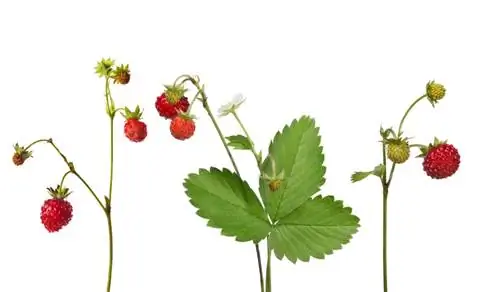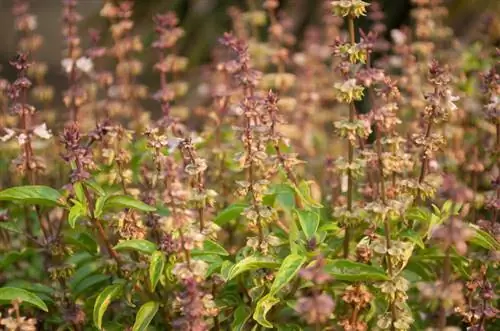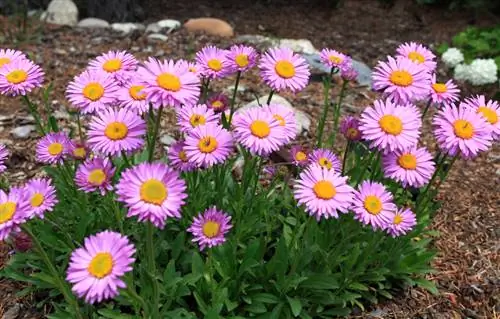- Author admin [email protected].
- Public 2023-12-16 16:46.
- Last modified 2025-01-23 11:20.
Cushion asters are quite robust and can also tolerate sub-zero temperatures. But it shouldn't get too cold and icy. Therefore, choose a favorable location for planting. How to protect the pillow asters in winter.

Are cushion asters hardy and how do I protect them in winter?
Cushion asters are hardy and can tolerate sub-zero temperatures, but icy winds can harm them. Choose a location in the garden that is sheltered from the wind or use a container. Protect the plant in winter by covering the root area, mulch and brushwood.
Cushion asters overwinter outside
Cushion asters are hardy and can tolerate sub-zero temperatures. They are therefore maintained in the garden for several years.
However, the perennial is troubled by the icy wind that often blows through the garden in winter.
So plant cushion asters in a sunny but wind-protected place. Alternatively, you can also grow the perennial in a pot that you overwinter on the terrace in winter.
How to overwinter the cushion aster
When overwintering outdoors, you should also protect the cushion asters from severe frost and icy winds.
- Cover the root area with compost or leaves
- Do not cut back cushion aster in autumn
- Covering plants with fir branches in the first year
Feel free to pile a thick layer of mulch around the plant. You should avoid cutting them at all, especially if they are young cushion asters. If the upper shoots freeze off, it's not so tragic. They will be cut off next spring and then sprout again.
Overwintering cushion aster in a bucket
If the cushion aster is in a pot, you can place it in any sunny location in summer.
If winter is approaching, place the bucket on a piece of wood in a wind-protected corner on the terrace.
Cover the pot with bubble wrap (€14.00 on Amazon) and cover the plant with brushwood. Don't forget to water the cushion asters every now and then so that the soil doesn't dry out completely.
Don't clear away the snow
The cushion aster survives the winter particularly well when snow falls quite early in the year. The snow cover provides wonderful protection from the wind and also keeps the ground slightly warm. In addition, the snow prevents the earth from drying out and the cushion aster from drying out.
Therefore, do not clear the snow away, but leave it lying on the bed.
Tip
The cushion aster, which is one of the autumn asters, blooms well into autumn. The flowers shine in white, pink, violet and blue tones and add colorful accents to the autumn garden.






